Kingdom Animalia Subphylum Vertebrata Suborder Serpentes Scientific name Trimeresurus malabaricus Rank Species | Phylum Chordata Order Squamata Family Viperidae Higher classification Trimeresurus | |
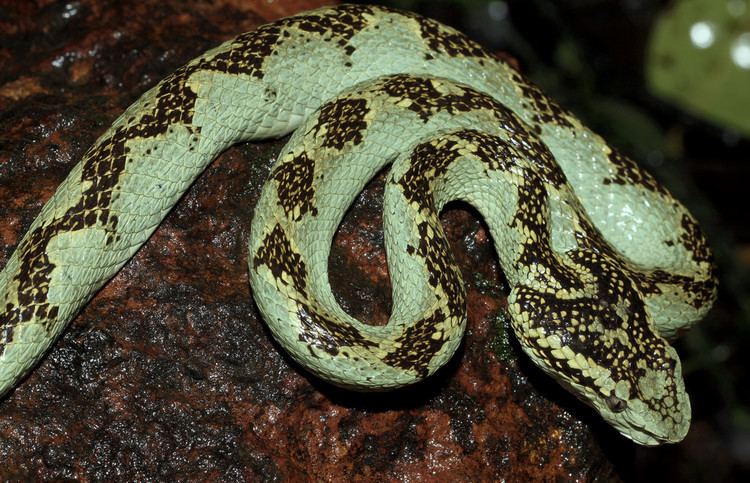 | ||
Similar Snake, Vipers, Trimeresurus, Reptile, Trimeresurus gramineus | ||
Malabar pit viper trimeresurus malabaricus at peppara wildlife sanctuary
Trimeresurus malabaricus, commonly known as Malabar pit viper, rock viper or Malabar rock pit viper is a venomous pit viper species endemic to southwestern India. No subspecies are currently recognized.
Contents
- Malabar pit viper trimeresurus malabaricus at peppara wildlife sanctuary
- Description
- Distribution and habitat
- Ecology
- Venom
- References
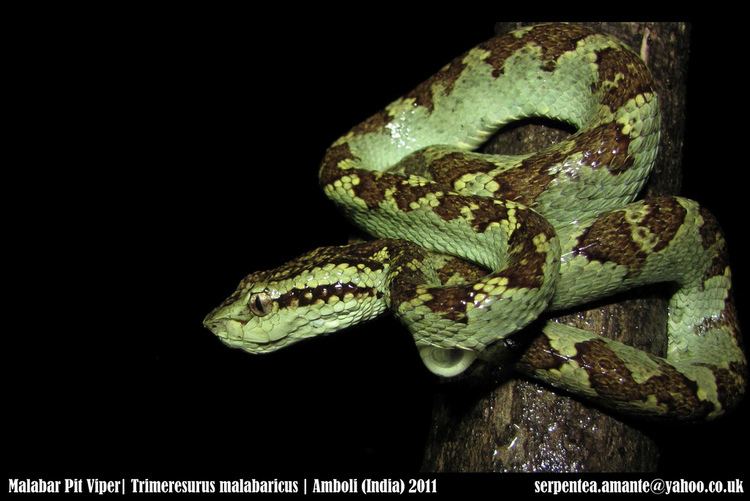
Description
Adults may attain a snout-vent length (SVL) of 105 cm (41 in). The tail is prehensile.

The weakly keeled dorsal scales are arranged in 21 or 19 rows at midbody. Ventral scales in the males number 143-158 and in females 136-159. Anal scale entire. Subcaudals paired and numbering 50-63 in males, 44-54 in females. Internasals large and usually touching. There are 9 or 10 supralabials, the first completely separated from the nasal. There is a single row of scales between supralabials and elongate subocular. The temporal scales are smooth or obliquely keeled.
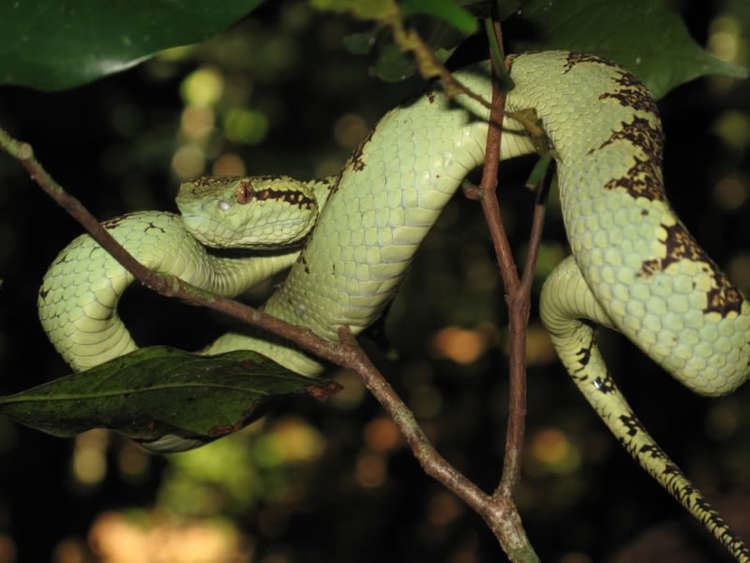
Many different colour morphs are known to exist, including colours such as yellow, green, and brown. Shown here is a brown colour morph with pattern.
Distribution and habitat
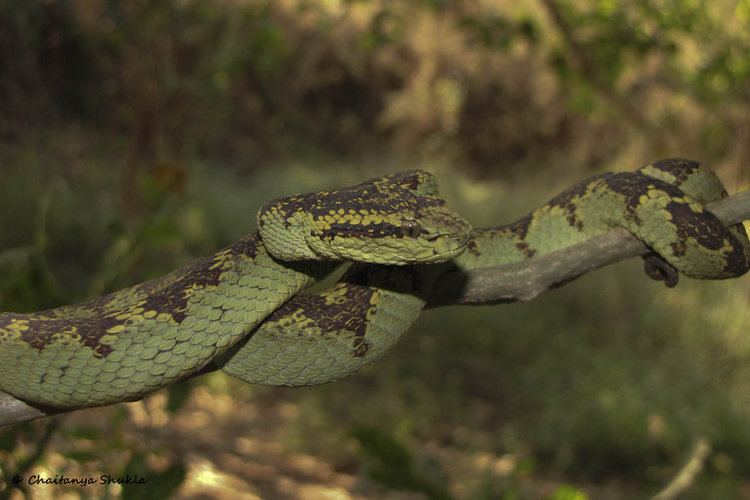
The species is found in southern and western India at 600–2,000 metres (2,000–6,600 ft) elevation. The type locality are the Western Ghats of southwestern India). It inhabits moist forests, both evergreen and deciduous, where it may be found on the ground, on low vegetation, or in shrubs.
Ecology
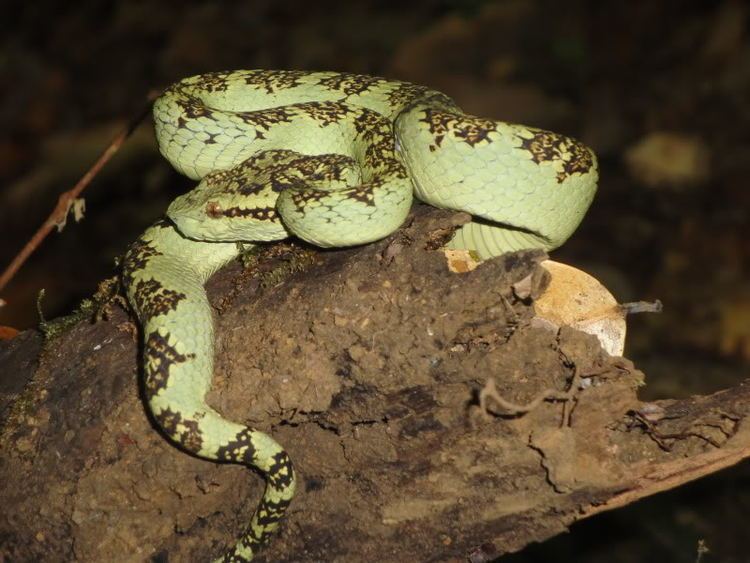
The Malabar pit viper is nocturnal and usually inactive in the day, sometimes seen basking on rocks or trees near streams. It is more commonly encountered during the monsoon months. The species preys upon tree frogs, geckos, musk shrews, and other small animals.
Venom
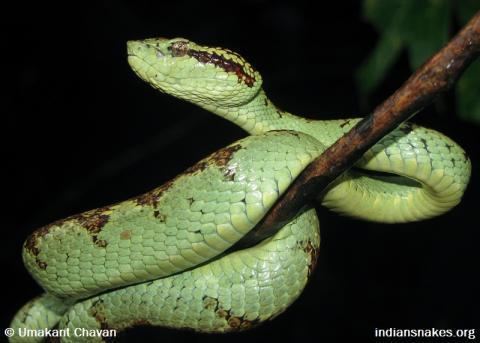
T. malabaricus is slow-moving, but capable of fast strikes. Its venom causes moderate pain and swelling to humans. These symptoms subside in a day or two.
